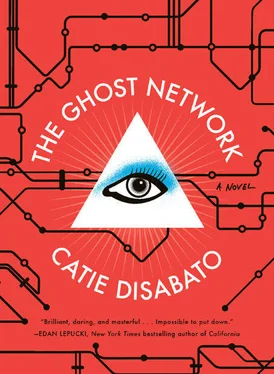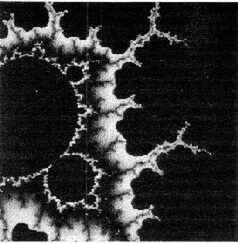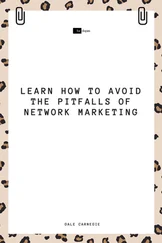Taer stepped into a long, dim hallway. She paused, taking a moment to prop the door open with her coat, frightened she’d be trapped inside. Then she took a few tentative steps forward, cursing as a floorboard creaked under her foot. The strange basement hallway had wooden floors.
The hallway was lined with white wooden doors, all of them reminiscent of the front door of a suburban house. Between each door hung a map, sixteen in all. At the very end of the hallway, opposite the code-locked steel door, was a final wooden door, the same as the others but painted red. Taer inched toward the red door. She looked at the maps, each of them illuminated with their own small lamp, the only source of light in the hallway. Although Taer saw the similarities in the maps, she didn’t know that the type of map had a name; they were called Edge of the World maps. Popular from the mid-1500s to the mid-1600s, famous mapmakers drew Edge of the World maps as decorative alternatives to navigational cartographic maps. Their popularity arose with the excitement surrounding the news of the discovery of New Worlds. They were made to entertain while they educated, although the maps taught moral rather than scientific lessons. ‡
On the left side of Edge of the World maps, the artist/ cartographer drew all the known continents, rendered with as accurate detail as possible. While it could be lovely, the left side of the map was perfunctory. Artists who didn’t want to take the time to draw the continents could buy stencils or just copy another person’s map. On the right side of the map, where all the action is, the water suddenly plummets over the edge of a flat earth, a giant waterfall into nothingness, the edge of the world. The real artistry of the maps was in the middle, near the edge of the falls. Guarding the edge of the world, each cartographer depicted a sea monster, or whatever creature was en vogue when the map was drawn: gluttonous whales, preening sirens, giant snakes, and krakens drawn as large as Africa. Occasionally, the cartographers would create their own monsters and give them names, like Ziphius or Steipereidur. §
Sometimes, the drawings showed the sea creatures crushing ships that dared to sail too close to the edge. In one of the maps that lined the hallway below the Racine building, a kraken held ten men in a single tentacle, crushing the life out of them. One particularly inventive mapmaker, Gérard Fournival, the “prodigal son of cartography,” drew two sailors cooking their dinner on the back of long-toothed whale so large they mistook it for an island. Fournival only colored the surface of the sea, so the map’s viewers could see the whale’s submerged tail covered in spikes. The whale’s similarly submerged head twisted as it looked over its monstrous shoulder with unveiled fury. The caption under that drawing, translated from Italian, reads: “In the moments before they realized their terrible mistake.” ǁTen of the maps Taer saw in the hallway were originals from the sixteenth and seventeenth centuries. The seven at the end of the hallway, near the red door, were colored screen prints signed ANTOINETTE MONSON.
Taer crept as softly as she could down the hallway, past the Edge of the World Maps, with her back against the wall to protect herself, like she had seen in movies. She tried each of the white doors on the left side of the hallway; each one of them was locked. She didn’t want to move away from the wall to check the ones on the right. At the end of the hallway, she grabbed the brass knob on the red door and pushed it open. Luckily, she didn’t immediately step through the doorway, because the door didn’t open into another room. Instead, it opened into empty space, into nothing. The Edge of the World maps weren’t just decoration; they were a warning.
Taer cautiously peered through the doorway. The floor was a level below her. In the sunken room, a young man sat at a desk covered in papers and a large Mac desktop monitor. Nicolas Berliner was glaring at her.
Taer hadn’t often encountered violence outside of a movie screen or television set. She wasn’t well acquainted with action. As Taer teetered on the edge of the trap door, the break-in at her apartment and the gun she got out of it should’ve been at the forefront of her mind. Instead, she stared dumbly at Berliner, until, fuzzily captured by the audio recorder in Taer’s pocket, he shouted at her:
“Caitlin Taer?”
With that, she was unstuck.
“Where’s Molly Metropolis?” Taer shouted into the huge room. Her voice echoed. “Is Molly down here?”
Berliner laughed. “There’s a staircase to your left, through the door. Come down here.”
“How do I know you don’t have a gun?”
“I lost my gun.”
“Yeah, I know. At my apartment. How do I know you don’t have another one?”
“This isn’t a gangster movie. Get down here.”
Curiosity overrode caution. Taer decided to risk descending to the bottom of the big room. She found the door to her left, which opened to a staircase that descended into the office.
“You’re Nicolas Berliner, right?” Taer said, taking in the giant two-story room, enthralled with the high ceiling and at the huge painting of The Ghost Network on the wall.
“You’re Caitlin Taer.”
“Cait.”
“I’m Nick. What do you mean, ‘at my apartment’?”
“What?” Taer said.
“You said I lost my gun at your apartment, but as far as I know I’ve never been to your apartment.”
“I’m not going to make you pay for, like, my plates or anything. We don’t have to fuck around about this. You left your sketchpad, too.”
“No, listen, I’ve never been to your apartment,” Berliner said, “Someone took my gun from me. Someone took my gun and my sketchpad weeks ago.”
“Sure. You just want me to give up her notebook, or something. You can’t have it.”
“Caitlin—”
“No one calls me Caitlin.”
“Cait. I didn’t break into your apartment. Where’s Gina?”
“I’m not here with anyone.”
“I talked to Irene, I know you’re with Gina. Where is she?” Berliner asked.
“She’s at home. Can you just shut up and tell me what happened to Molly?”
“That’s what I’m trying to figure out, too.”
“Yeah, right!”
Their argument continued, until Berliner coaxed Taer over to his computer and showed Taer an e-mail from Molly that had arrived in his inbox a few days after she disappeared:
My dearest friend,
I hate to leave you alone in the middle of a battle. I’m writing in the hope that maybe the last thing you’ll remember about me is this e-mail, and not the fact that I abandoned you in the dead of winter (both figuratively and literally).
I’ll leave you with this:
I promise that leaving now was, in fact, an act of war against the people and things we’ve been fighting (including: Ali and Peaches, the secrecy of the members of the N.S., our own personal failings and foibles). And I’ve left the means for you to pursue a similar act of war — if you choose. I hope you’ll strike as I’ve struck. Do you understand what I’m writing to you?
Berliner lamented, “Molly always liked a good rhetorical question.”
Berliner had hired several private detectives and securities experts to trace the e-mail, whose names and numbers he had conveniently forgotten by the time he acquiesced to an interview with me. The experts found that Molly had sent the e-mail from her phone; she had typed it the day she disappeared, and scheduled it to send at a later date.
“Holy shit,” Cait said several times as she was reading the letter. “I have to text Nix to come over here. She’s next door.”
“I thought you said she was at home,” Berliner said, with an alarmed tone.
Читать дальше












